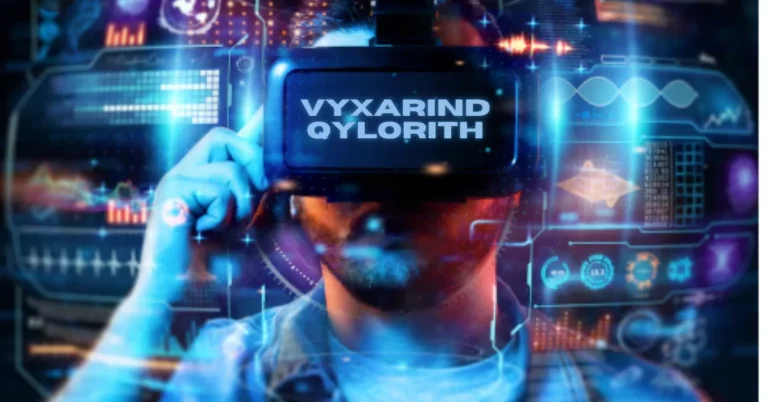
quantum computing implications for encryption
Introduction: quantum computing implications for encryption
Okay, so picture this—you’re fiddling with some electronics, building your first DIY LED lamp, or maybe just scrolling through some random Reddit post where someone says, “Looks like the diode’s blown.” quantum computing implications for encryption
And you’re like… the what now?
I’ve been there. When I first heard about diodes, they sounded like something you’d find in a sci-fi movie or inside a nuclear reactor. Turns out, they’re everywhere—literally in every gadget we own. And they’re crucial. quantum computing implications for encryption
In this article, I’m gonna break it all down: what a diode is, how it works, why it’s awesome, and how this tiny thing might actually help defend the internet from future quantum hackers (no kidding). quantum computing implications for encryption
Let’s get into it.
What Even Is a Diode (And Why Should You Care)?

Let’s keep this casual.
A diode is a small, unassuming electronic component that acts like a one-way street for electricity. It lets current go one way, but not the other. That’s it. Super basic… but also super powerful. quantum computing implications for encryption
Think of it like this:
- Electricity tries to go through a diode.
- If it’s going in the “right” direction? Go ahead.
- Wrong direction? Sorry pal, door’s shut.
That simple trick makes diodes one of the most important parts in modern electronics. Without them, your phone wouldn’t charge, your LED lights wouldn’t work, and your computer’s power supply would be toast. quantum computing implications for encryption
The (Slightly Nerdy) Science Behind It
Alright, time to peek under the hood—but don’t worry, I’ll keep it beginner-friendly.
Diodes are made from semiconductors—usually silicon. These are materials that sometimes act like conductors, sometimes like insulators. Basically, the mood ring of the electronics world. quantum computing implications for encryption
Here’s how a typical diode is built:
- P-type material: Has “holes” (places where electrons could go).
- N-type material: Has extra electrons just hanging out.
Smash those two together, and you’ve got what’s called a PN junction. That’s the magic zone where all the diode action happens. quantum computing implications for encryption
When voltage is applied in the right direction (positive to the P-side, negative to the N-side), the diode lets current flow through like a polite usher at a concert.
But if you reverse the voltage, the diode slams the door shut. No current gets through. quantum computing implications for encryption
This behavior is called:
- Forward bias = current flows (green light)
- Reverse bias = current blocked (red light)
Simple? Yes. Genius? Also yes.
Types of Diodes (Because There’s More Than One Kind of Juice)
You didn’t think there was just one kind of diode, did you? Nope. Diodes come in a bunch of different types, each with its own personality. quantum computing implications for encryption
Here’s the main crew:
1. Rectifier Diode
- Converts AC to DC.
- Used in phone chargers, laptops, and anything else with a plug. quantum computing implications for encryption
2. LED (Light Emitting Diode)
- Glows when electricity passes through.
- You’ve seen these in RGB keyboards, headlights, light strips, and even toothbrushes. quantum computing implications for encryption
3. Zener Diode
- Allows current in reverse—but only at a specific voltage.
- Basically, it’s the voltage police. quantum computing implications for encryption
4. Schottky Diode
- Super fast and efficient.
- Found in solar panels and fast-switching circuits.
5. Photodiode
- Reacts to light. Produces current when hit with photons.
- Used in cameras, light sensors, and remote controls.
6. Varactor Diode
- Changes capacitance with voltage.
- Used for tuning radios and frequency control.
Each one’s got its thing. It’s kind of like Pokémon—gotta learn them all if you’re into electronics. quantum computing implications for encryption
Where You’ve Actually Seen Diodes in Real Life
Diodes are so embedded in your everyday tech that you probably see (or use) hundreds of them a day without realizing. quantum computing implications for encryption
Data centers and clean tech? Diodes help power and protect them both.
In your phone:
- Battery charging
- Display backlight (yep, LEDs)
- Surge protection
In your house:
- Power adapters
- LED bulbs
- TVs and smart speakers
In your car:
- Alternators
- Brake lights
- Parking sensors
Even in space:
- Satellites
- Communication systems
- Solar power circuits on the ISS
They’re small, silent, and essential.
Now Let’s Get a Little Sci-Fi: Diodes, Encryption & Quantum Computing
Okay, now for the fun stuff—quantum encryption and how diodes are stepping into a starring role in tech’s next big leap. quantum computing implications for encryption
Wind, data, and quantum logic: where physics meets future-proof encryption. quantum computing implications for encryption
The Problem:
Our current encryption systems rely on complex math—stuff that regular computers take forever to crack. But quantum computers? They could break that math like it’s made of LEGO bricks. quantum computing implications for encryption
That’s scary. Every password, every message, every transaction? Vulnerable. quantum computing implications for encryption
The Solution? Diodes (Sort Of)
Tunnel diodes—which work on the principle of quantum tunneling—can switch crazy fast and with super low noise. That makes them ideal for: quantum computing implications for encryption
- Quantum communication circuits
- Ultra-secure data transfer
- Possibly resisting quantum hacking
They’re still experimental, but the potential is huge. That little diode in your calculator? Its next-gen cousin might be protecting your bank account in 2040. quantum computing implications for encryption
Diode Symbols: So You Can Sound Smart Around Engineers
If you’ve ever looked at a circuit diagram, you’ve probably seen this
That’s the diode symbol. The triangle shows current flow. The line says “STOP” if current tries to come from the other direction. quantum computing implications for encryption
For LEDs, there are tiny arrows showing light coming out. For Zeners, the line gets a stylish zigzag. quantum computing implications for encryption
Knowing these symbols is like learning the alphabet of circuits.
Diode Mistakes I’ve Made So You Don’t Have To
Let me save you some face (and maybe a fried component or two). Here are some common mistakes when working with diodes:
- Installing them backward: Been there, done that. The circuit just… doesn’t work.
- Mixing up LEDs and bulbs: LEDs need proper voltage and polarity. They don’t forgive easily.
- Skipping the resistor: An LED without a resistor is a very short-lived light show.
- Assuming all diodes behave the same: They don’t. Always check the specs.
Seriously—check your polarity. It’s not optional.
How to Test a Diode (Because Sometimes They Go Bad)
If you’ve got a multimeter lying around (and if you’re even thinking about DIY electronics, you should), here’s how to test a diode:
- Set your multimeter to diode mode.
- Connect the red probe to the anode, black to the cathode.
- A good diode will show a voltage drop (like 0.6V). Reverse it, and it should show nothing (open loop).
If it reads zero in both directions or conducts both ways? Toss it—it’s dead.
If You’re Just Getting Started with Electronics…
Welcome to the club. It’s a fun (and sometimes frustrating) hobby, but totally worth it. quantum computing implications for encryption
Here are a few beginner tips when it comes to working with diodes:
- Start with LEDs—they’re visual and satisfying.
- Use circuit simulators like Falstad (it’s free and super helpful).
- Don’t be afraid of datasheets. They look scary but are actually super useful.
- Always double-check polarity. Seriously.
Oh—and label your components. Nothing’s worse than digging through a pile of mystery parts.
Why Diodes Still Matter in 2025 (And Beyond)
In the world of AI, autonomous robots, and the quantum future, it’s easy to think components like diodes are old news.
Nope.
If anything, they’re becoming even more important:
- Diodes make our devices efficient
- They protect delicate chips from power surges
- They enable new tech like optical computing and photonics
The tech world is evolving, but the humble diode still holds the line.
Quick FAQ for the Curious
Can diodes go bad?
Absolutely. Heat, current spikes, or age can take them out. Always test if you’re unsure.
Are LEDs really diodes?
Yep. They’re just diodes that emit light when current flows through them.
What happens if I install one backward?
It won’t conduct electricity. Or worse, it might block something important. Some even explode (don’t ask how I know).
Are diodes used in quantum computers?
Not directly yet, but their advanced types (like tunnel diodes) are part of the quantum tech conversation.
Final Thoughts: Small But Mighty quantum computing implications for encryption
If you’ve made it this far, congrats—you officially know more about diodes than 99% of people.
They may be small, silent, and easy to miss, but diodes are absolute workhorses in the tech world. They make our devices smarter, safer, and more efficient. And as the digital world grows, so will the role of these tiny tech heroes.
So next time you see an LED flicker on, give a little nod to the diode behind the scenes. It’s doing more than you think. quantum computing implications for encryption
For more visits: TechBeTime.org





